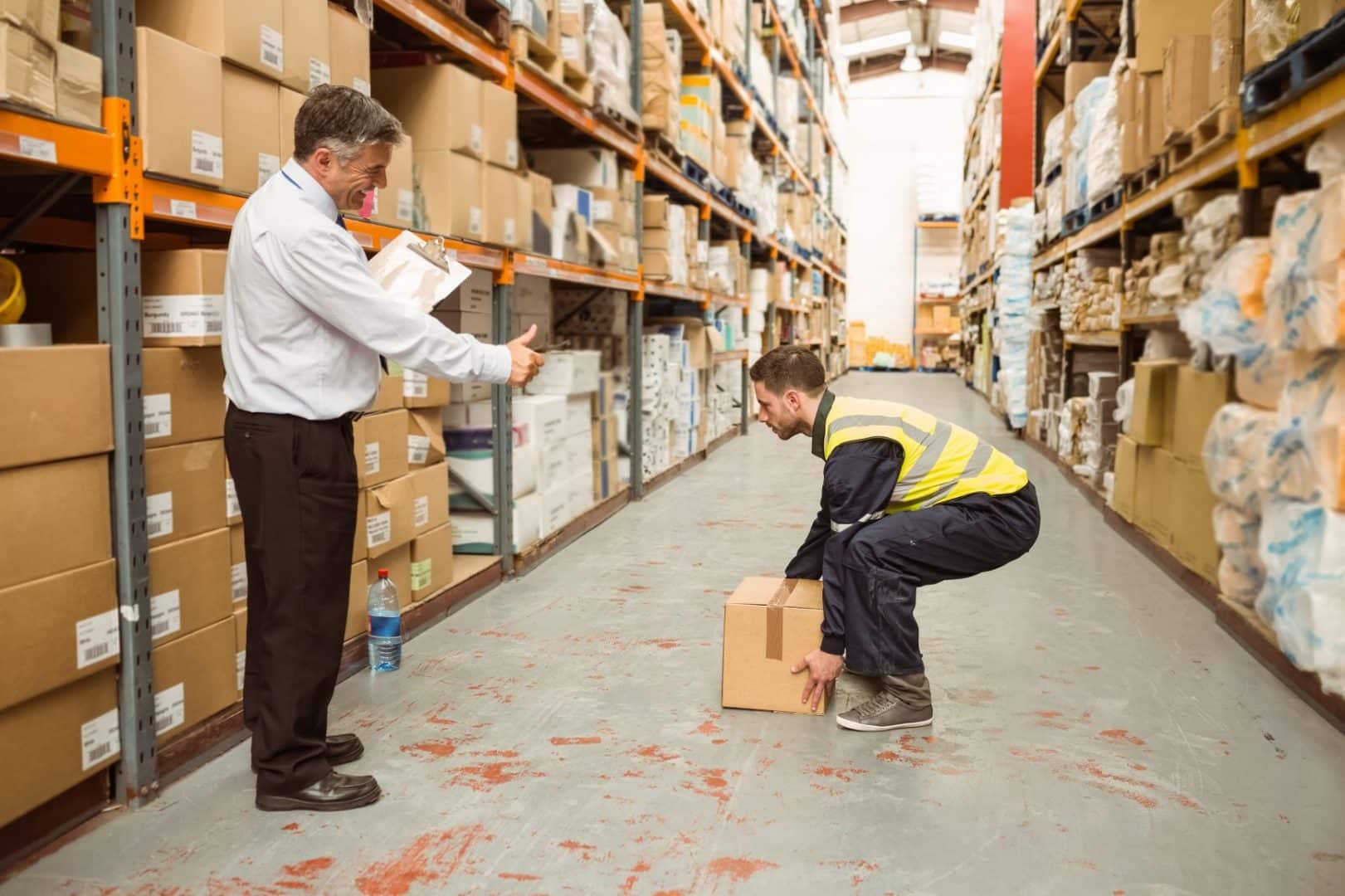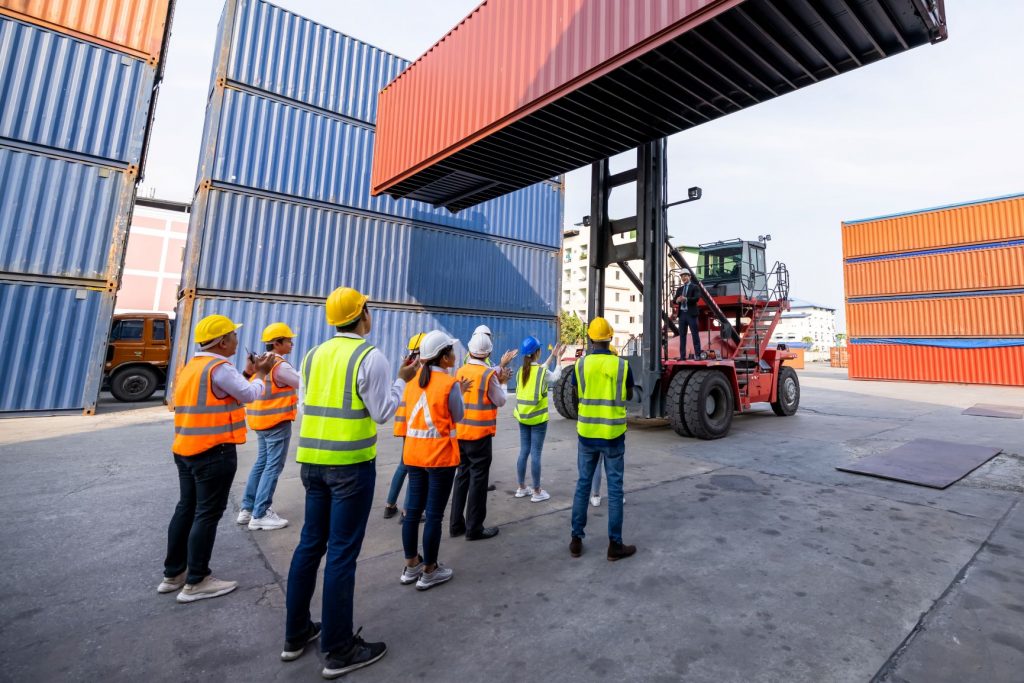Transportation and logistics training can greatly improve a company’s performance in the consumer goods industry
What is logistics training?
Logistics employees plan and control the process of storing and transporting the goods and services as efficiently as possible. With more and more businesses coming to the forefront, it is now necessary for you to improve your logistics system to stay ahead.
With the help of proper logistics training in this era of e-commerce, employees will be able to master the necessary skills and improve their performance over time. Including well-structured courses and hands-on exercises in your logistics training course will ensure that the learning process is smooth and efficient.
Characteristics of logistics employees
Logistics employees have to tackle a lot of responsibilities and maintain deadlines. They usually work remotely and tend to approach their work in a non-technical fashion. You might find that they are rather slow to adopt new technologies.
The Bureau of Labor Statistics (BLS) finds that logistics employees may have to develop communication skills, critical-thinking skills, customer service skills, organizational skills and problem-solving skills to get better at their job.
What are the differences between logistics and warehouse training?
Warehousing refers to the safe and proper storage of goods. The warehouse is the central location for a company to receive, store and distribute goods and raw materials. Warehouse management includes shipping, receiving, unloading and organization of items.
On the other hand, logistics refers to the functional aspects of warehousing and the delivery of goods. Logistics management is responsible for controlling the inbound and outbound flow of goods.
Different use cases within logistics
Logistics closely deals with different use cases like storage and transport operations. It is recommended to try an innovative approach and cultivate new and more efficient practices. The development of Logistics Management Platforms has made it possible for shippers and delivery agents to improve their route optimization, increase their fleet productivity, and cut down on deadhead miles.
Route optimization identifies the shortest and most efficient route for logistics transport by tracing the path with the help of graph analytics. Using a digital and interactive layout to monitor the goods can also boost operational efficiency.
Why is logistics training important?
A report by PwC titled, “The Future of the Logistics Industry” found that 50% of respondents consider the lack of digital culture and training to be the biggest challenge for transportation and logistics.
Logistics training will help you prepare your employees to deal with any challenge they might face at work in the most efficient way possible. You can personalize the training process based on your company’s values and objectives, which will allow the employees to deliver their best performance.
- Gain competitive advantage
If you want to impress your customers, you have to improve your logistics management and stand out among your competitors. Since logistics management is one of the determinants of how the customer is treated at the end of the supply chain, proper logistics training might give your employees an advantage and increase company profits in the long run.
- Build lasting relationships with consumers
More businesses are entering the market every day. You should make an effort to give your clients the best service so that they stay loyal to you. Smoother logistics will keep your customers coming back to you with high expectations. Work on continuous improvement and stay up to date with trends to build a dependable client base.
- Proper system implementation
Well-trained employees will be able to follow your instructions and implement new strategies without wasting much time. They will be more familiar with advanced technologies which will help them adjust to new systems significantly faster.
- Efficient workflow
The working of a business will be stunted without proper logistics management. Providing logistics training to your employees will ensure that the workflow remains smooth and efficient even at the time of introducing new changes. Employees will be able to make the best of the tools available to them.
5 logistic training tips for employees
If you are planning to introduce a logistics training course for your employees, the following tips might help you out.
- Learning by doing
Logistics work happens to be practical in nature, and employees may benefit from on-the-job training. It is recommended to impart theoretical knowledge to them before they take up their duties, but practical experience is equally if not more important. Encourage your employees to keep an open mind and learn as they do.
- Scenario-based video training
For employees to get a clear idea about their responsibilities, they have to experience the situations they might face from a third-party perspective. Scenario-based video training familiarizes employees with different aspects of the job even if they are not physically present at the workplace. Visual content is also more engaging to employees.
- Microlearning
Microlearning refers to the consumption of knowledge in small portions instead of trying to learn everything at once. Logistics is a complicated subject and there is always more to learn. Microlearning is a good approach to take as it can increase employee engagement and encourage them to tackle smaller and more comprehensible modules at a time. It allows employees some flexibility to continue the learning process as and when they are free.
- Teamwork
Logistics management usually requires employees to work together and fulfill the goals of the team. Including team-building exercises in the training course will help employees become more comfortable around each other. This, in turn, will lead them to collaborate more easily.
- Monitoring performance trends
You have to fall back on numbers when it comes to testing whether your logistics training program is truly effective. You can monitor the performance of your employees and test their knowledge with the help of a few key metrics. This will help you update the program as and when necessary.
Want to learn more? Let’s chat!
Conducting a successful logistics training program
A Sapio Research survey in 2017 had 75% of the respondents wishing visibility of all events affecting the inbound flow of goods from suppliers. However, it was successfully achieved by just 29%, which shows that companies still have a long way to go in this department.
A comprehensive logistics training program will go a long way in improving employee performance and boosting company profits. We have listed ten steps to finesse your training program below.
10 steps to improve logistics training for employees
If you are planning to improve your training for logistics employees, you can follow these steps:
- Utilize a realistic budget
Logistics training can be an expensive process which is why you need to be mindful of the budget. Setting aside a budget and then creating a plan around it will save you from extra expenses later on. In-house training happens to be less expensive than outsourcing.
- Regular assessments and progress-tracking
To recognize your employees’ knowledge gaps, you can begin the training with a thorough assessment. Once you have distributed the training materials, it is important to continue regular evaluations so that you can check if the team is becoming more efficient. You can prioritize the training efforts based on your current goals and monitor your employees’ performance.
- Identify the best training method for each employee type
You will find that different employee groups respond better to different methods of training. Some might prefer visual learning through instructional videos while others might prefer hands-on training under a mentor. Once you categorize your employees under each training method and customize the process accordingly, you will notice more improvement.
- Follow a schedule
If your employees are continuing to work while taking the logistics training course, it might not be feasible to follow a very strict schedule. Instead, you can make the program flexible by introducing remote training modules and tools. you can set deadlines for your employees so that they do not fall behind and set up scheduled logistics training classes from time to time.
- Balance theory and practical knowledge
Proper logistics training will help employees be well-versed with the theory and master essential technical skills. When creating your program, you will benefit from remembering that the success of the course will come down to how well the employees can apply what they learn.
- Take advantage of online learning platforms
There are various online learning platforms like Bites that will make it easier for you to conduct logistics training. You can distribute the training materials and track your employees’ profess through these online learning platforms. They are also accessible to remote workers.
- Provide consistent training to employees at different locations
Logistics management has to be consistent across different branches of the company so that employees can follow the same set of rules. Consistency is key when creating the training materials so that you can distribute them among all employees.
- Invest in advanced technologies
With the introduction of machine learning and artificial intelligence in the world of training, it has become easier than ever to automate the learning process depending on the learner’s preferences. Artificial intelligence will allow you to achieve a high degree of personalization in your training. Virtual Reality will let you create lifelike simulations so that your employees can practice their skills without any fear of consequences.
- Set short-term and long-term goals
You have to encourage your employees at every step so they can strive to deliver results. Setting short-term goals for them to achieve will give them a sense of accomplishment. Long-term goals, on the other hand, will encourage them to improve further.
- Update the training materials often
Modern technologies and equipment are revolutionizing logistics management. You should keep up with the changing trends and harness the power of the latest developments to establish your superiority over competitors.
How can you conduct employee online logistic training classes?
To conduct regular online logistic training classes, you can take advantage of the following learning methods.
- Video training modules
According to the 2019 Training Industry Report, 88% of large companies used virtual classrooms and video broadcasting to improve their training. Video training is a convenient way of imparting knowledge to employees who are scattered all over the globe at the same time. These videos can be instructional or in commentary form depending on your approach. Platforms like Bites combines video training with microlearning to give your employees the best of both worlds.
- Learning management platforms
Learning management platforms will make it easy for you to gather all your employees in one digital place and provide training. These platforms come with built-in chats and multimedia sharing options so that there are no communication problems. They also allow remote team members to engage in training together which improves their relationship. - Webinars
Webinars are a great way of allowing remote employees to communicate with each other in the same space and create a sense of unity. Webinars can be held on a variety of topics and are the next best thing after in-person classes.
Want to learn more? Let’s chat!
How to train logistics employees with Bites?
Logistics training is important for companies who want to progress and profit in the modern world. With the help of efficient logistics workflows, you will be able to increase your revenues and offer better customer service. Implementing a structured logistics training program will help your employees be aware of their duties and their score for improvement.
At Bites, we offer a unique logistics training solution for your employees. You can create bite-sized visual training modules for your employees by compiling existing presentations or recording videos on your own.
Once you create a training video or playlist, you can directly share it with your employees using commonly used instant messaging apps or internal communication platforms. Bites can be integrated with commonly used platforms so that you can reach your employees with ease.
Bites makes it easy for you to update your employees on the most recent developments without wasting any time since creating and sharing content takes just a few minutes. The learners will be able to leave their feedback or participate in a discussion with their peers after consuming each bite-sized module. The content creator or manager can use the analytics dashboard to track employee progress and engagement. Try out Bites today!








